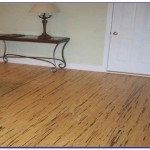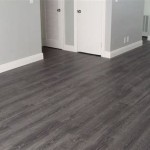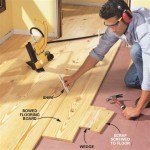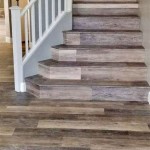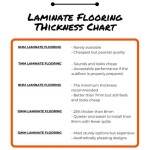Outdoor Flooring Options Over Concrete Patio: A Comprehensive Guide
Concrete patios provide a durable and relatively low-maintenance outdoor surface. However, the aesthetic appeal of plain concrete can be limited. Many homeowners seek to enhance the look and functionality of their patios by installing outdoor flooring over the existing concrete slab. This approach can significantly improve the comfort, style, and overall value of the outdoor living space. The selection of the right flooring material requires careful consideration of factors such as climate, budget, personal preferences, and the existing condition of the concrete patio.
This article provides a comprehensive overview of various outdoor flooring options suitable for installation over concrete patios, highlighting their benefits, drawbacks, installation considerations, and maintenance requirements. The information is intended to assist homeowners in making informed decisions about enhancing their outdoor living spaces.
Key Considerations Before Installation
Before installing any type of flooring over an existing concrete patio, several crucial aspects must be addressed to ensure a successful and long-lasting outcome. These considerations encompass the condition of the concrete, drainage solutions, and the specific requirements of the chosen flooring material.
The first and foremost step is to thoroughly inspect the concrete patio for any signs of damage. Cracks, uneven surfaces, and spalling (surface flaking) can compromise the integrity of the new flooring. Minor cracks can often be repaired with concrete patching compounds. However, larger or structural cracks may necessitate professional evaluation and repair to prevent future problems. An unstable concrete base will invariably lead to problems with the overlaying flooring.
Proper drainage is another critical factor. Standing water on the patio can lead to moisture damage, mold growth, and slippery surfaces. Ensuring that the patio has a slight slope away from the house will facilitate water runoff. If drainage is inadequate, consider installing a drainage system to prevent water accumulation under the new flooring. This might involve adding a subsurface drainage layer or modifying the existing patio slope.
The chosen flooring material will dictate specific installation requirements. Some materials require a perfectly level surface, while others can tolerate minor imperfections. Understanding these requirements is essential for proper installation and preventing future issues. For example, interlocking tiles may require a more level surface than composite decking.
Finally, consider the overall height of the new flooring in relation to doorways and surrounding landscaping. Adding a thick flooring layer can create a tripping hazard or impede access to the house. Careful planning and selection of materials with appropriate thicknesses are crucial.
Popular Outdoor Flooring Options and Their Characteristics
A diverse range of outdoor flooring options are available for installation over concrete patios, each offering unique aesthetic and functional properties. The following sections detail some of the most popular choices, outlining their key characteristics, advantages, and disadvantages.
Interlocking Deck Tiles: Interlocking deck tiles are a popular and relatively easy-to-install option. They typically consist of square or rectangular tiles made from various materials, including wood, composite, plastic, or rubber. These tiles feature interlocking edges that allow them to be easily snapped together, creating a seamless surface. Interlocking deck tiles are available in a wide range of colors, textures, and patterns, offering considerable design flexibility.
The advantages of interlocking deck tiles include ease of installation, minimal tools required, and the ability to cover a large area quickly. Their modular design also allows for easy replacement of individual tiles if damaged. Composite and plastic tiles are particularly resistant to moisture, rot, and insect damage, making them a durable option for outdoor use. However, some interlocking tiles may not be suitable for areas with heavy foot traffic or extreme weather conditions. The plastic ones can get very hot in sunny areas.
Composite Decking: Composite decking is a manufactured material made from a combination of wood fibers and plastic. It offers the look of natural wood without the maintenance requirements. Composite decking is resistant to rot, decay, insects, and fading, making it a durable and long-lasting option for outdoor flooring. It is available in a variety of colors, textures, and styles, mimicking the appearance of different types of wood.
The advantages of composite decking include its low maintenance requirements, durability, and resistance to the elements. It does not require painting, staining, or sealing, and it is easy to clean with soap and water. Composite decking is also slip-resistant, making it a safe option for areas that may get wet. However, composite decking can be more expensive than some other flooring options, and it may become hot in direct sunlight.
Outdoor Porcelain Tile: Porcelain tile is a durable and versatile flooring option that is well-suited for outdoor use. It is resistant to moisture, staining, fading, and scratching, making it a long-lasting and low-maintenance choice. Outdoor porcelain tile is available in a wide range of colors, patterns, and textures, including options that mimic the look of natural stone or wood. It is also slip-resistant, making it a safe option for patios and pool decks.
The advantages of outdoor porcelain tile include its durability, low maintenance requirements, and aesthetic versatility. It can withstand extreme temperatures and is resistant to fading from sunlight. However, porcelain tile can be more expensive than some other flooring options, and it requires professional installation to ensure proper sealing and grouting. It can also be cold to the touch in cooler climates.
Pea Gravel: Pea gravel offers a natural and cost-effective flooring solution for concrete patios. It consists of small, rounded stones that are available in a variety of colors and sizes. Pea gravel provides good drainage and is relatively easy to install. It can be used to create a rustic or informal outdoor space.
The advantages of pea gravel include its affordability, ease of installation, and natural appearance. It provides good drainage and is relatively low-maintenance. However, pea gravel can be difficult to walk on, especially for individuals with mobility issues. It can also shift and spread over time, requiring occasional re-leveling. Weeds can also grow through pea gravel if a weed barrier is not installed underneath.
Outdoor Rugs: Outdoor rugs provide a simple and cost-effective way to add color and texture to a concrete patio. They are available in a variety of materials, including synthetic fibers and natural fibers such as jute and sisal. Outdoor rugs can help to define a seating area or add a touch of warmth to the space.
The advantages of outdoor rugs include their affordability, ease of installation, and versatility. They can be easily moved or replaced to change the look of the patio. However, outdoor rugs can be prone to staining and fading, and they may require regular cleaning to maintain their appearance. Natural fiber rugs can also be susceptible to moisture damage and mold growth. Choose rugs that are specifically designed for outdoor use and are resistant to moisture and fading.
Epoxy Coating: An epoxy coating is a durable and seamless flooring option that can be applied directly to a concrete patio. It provides a smooth, glossy finish that is resistant to stains, scratches, and chemicals. Epoxy coatings are available in a variety of colors and can be customized with decorative flakes or metallic pigments.
The advantages of epoxy coatings include their durability, seamless appearance, and resistance to stains and chemicals. They are easy to clean and maintain, and they can enhance the aesthetic appeal of the concrete patio. However, epoxy coatings require professional installation to ensure proper application and bonding. The concrete surface must be thoroughly cleaned and prepared before applying the epoxy. It can also be slippery when wet, so a non-slip additive may be necessary.
Installation Considerations for Different Flooring Types
The installation process varies significantly depending on the chosen flooring material. Understanding the specific requirements of each option is crucial for a successful and long-lasting installation. Some materials, like interlocking tiles, are designed for DIY installation, while others, like porcelain tile and epoxy coatings, typically require professional expertise.
Interlocking Deck Tiles: Installation typically involves cleaning the concrete surface, ensuring it is relatively level, and then simply snapping the tiles together. A border may be needed to contain the tiles along the edges of the patio. No special tools are typically required, making it a simple DIY project.
Composite Decking: This usually requires a more involved installation process. A substructure made of wood or composite joists must be constructed over the concrete patio to provide support for the decking boards. The decking boards are then attached to the joists using screws or hidden fasteners. Proper spacing between the boards is essential for drainage and ventilation.
Outdoor Porcelain Tile: This requires a skilled tile setter. The concrete surface must be thoroughly cleaned and leveled. A layer of thin-set mortar is then applied, and the tiles are carefully placed and spaced. After the mortar has cured, the grout is applied and sealed to prevent water penetration. This is a labor-intensive process that requires precision and attention to detail.
Pea Gravel: This involves preparing the area by removing any debris and installing a weed barrier fabric. The pea gravel is then spread evenly over the patio surface to the desired depth. Raking the gravel periodically will help to maintain a level surface. Edging may be required to contain the gravel.
Outdoor Rugs: Typically, no installation is required beyond unrolling the rug and placing it on the patio. However, using outdoor rug pads can help to prevent the rug from slipping and protect the concrete surface. Ensure the concrete is clean and dry before placing the rug.
Epoxy Coating: This is a multi-step process that requires careful surface preparation. The concrete must be thoroughly cleaned, etched, and primed. The epoxy coating is then mixed and applied in multiple coats. The curing process can take several days, and the area must be protected from dust and debris during this time. Professional installation is highly recommended to ensure a durable and aesthetically pleasing finish.
Maintenance and Care for Outdoor Flooring
Maintaining the appearance and longevity of outdoor flooring requires regular cleaning and care. The specific maintenance requirements vary depending on the flooring material.
Interlocking Deck Tiles: Cleaning typically involves sweeping or hosing down the tiles to remove dirt and debris. Stubborn stains can be removed with mild soap and water. Check for loose or damaged tiles and replace them as needed.
Composite Decking: This is relatively low-maintenance. Regular sweeping or hosing down the decking is usually sufficient to keep it clean. Stains can be removed with deck cleaner or a mixture of soap and water. Inspect the decking for scratches or gouges and repair them with composite decking repair kits.
Outdoor Porcelain Tile: Regular sweeping or vacuuming will remove loose dirt and debris. Mop the tiles with a mild detergent and water. Periodically reseal the grout to prevent water penetration and staining. Avoid using abrasive cleaners, which can damage the tile surface.
Pea Gravel: Raking the gravel periodically will help to maintain a level surface and remove debris. Remove any weeds that grow through the gravel. Add more gravel as needed to replenish the surface.
Outdoor Rugs: Shake or vacuum the rug regularly to remove dirt and debris. Spot clean stains with a mild detergent and water. For deeper cleaning, hose down the rug and allow it to air dry. Store the rug indoors during the off-season to protect it from the elements.
Epoxy Coating: This requires minimal maintenance. Sweep or mop the surface regularly with a mild detergent and water. Avoid using harsh chemicals or abrasive cleaners. Repair any scratches or chips with epoxy repair kits.

Outdoor Flooring Over Grass Or Dirt Interlocking Tiles

How To Lay Deck Flooring On A Concrete Patio The Home Depot

5 Ways To Upgrade Your Concrete Patio

Patio Outdoor Flooring Encore Concrete Coatings

The Complete Guide To Choosing Best Outdoor Tile

Outdoor Tile Over Concrete Unique

4 Easy Diy Installation Patio Floor Covering Options

Leveling And Dry Fitting Tile In An Outdoor Area Young House Love

Building A Deck Over Concrete Patio Step By Guide

Outdoor Patio Tiles Over Concrete Https Www Otoseriilan Com Stain
Related Posts


